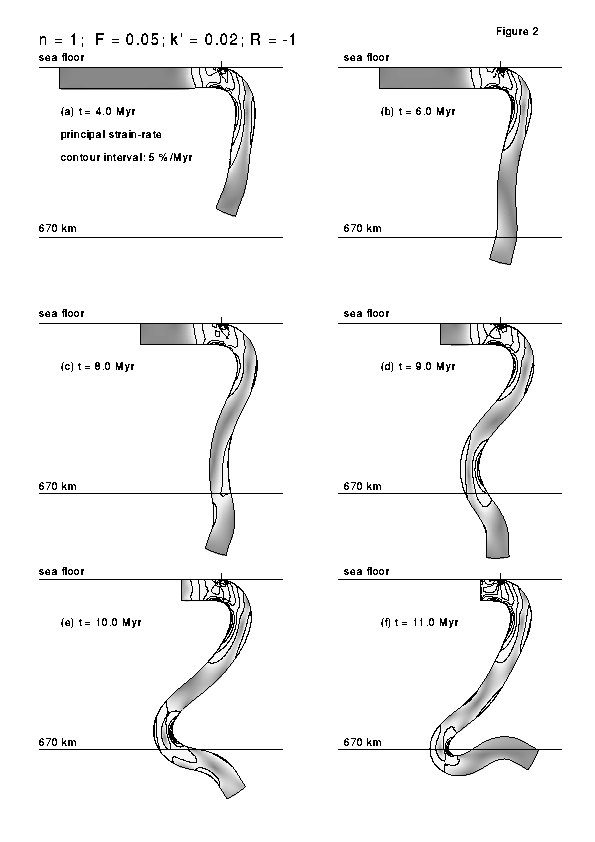
Oceanic lithosphere moves across the surface of the Earth as a cold rigid plate. Sooner or later that plate is subducted and it is forced underneath an overriding oceanic or continental plate, and sinks down into the mantle under the action of gravity. Because it is colder, it is denser than the underlying hot mantle. In this experiment the mantle is represented as a viscous slab embedded in a relatively low viscosity upper mantle. By removing the surrounding elements of the system (their effect is represented by boundary conditions on the slab) we can focus on what happens inside the slab. At 670 km depth, the major mantle mineral undergo a phase change to a denser form. Because the slab is cold, that phase change is delayed somewhat, so the slab below 670 km is here represented as having a positive buoyancy. At first the weight of the slab above pushes it into the lower mantle, but if the phase change doesn't occur soon enough, the end of the slab is forced back up again, and the slab buckles. The diagram below shows a sequence in time of the deforming slab, with contours of the principal strain-rate superimposed. Click here to see an animated sequence of the same experiment.

Relevant Publication
Houseman, G.A., and D. Gubbins, Deformation of subducted oceanic lithosphere, Geophys. J. Int, 131, 535-551, 1997.